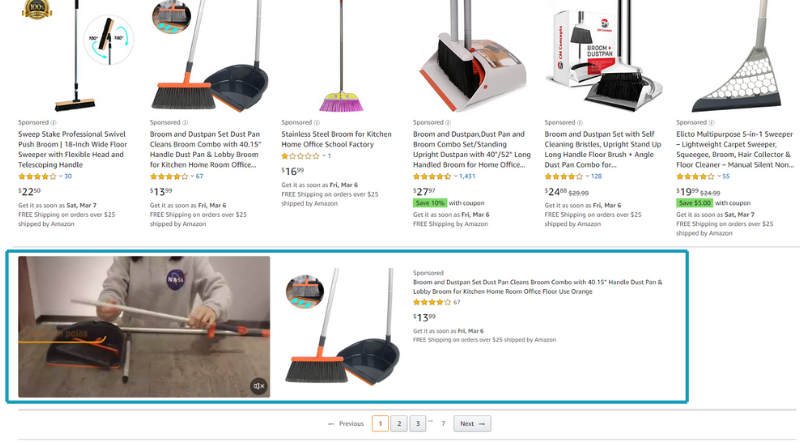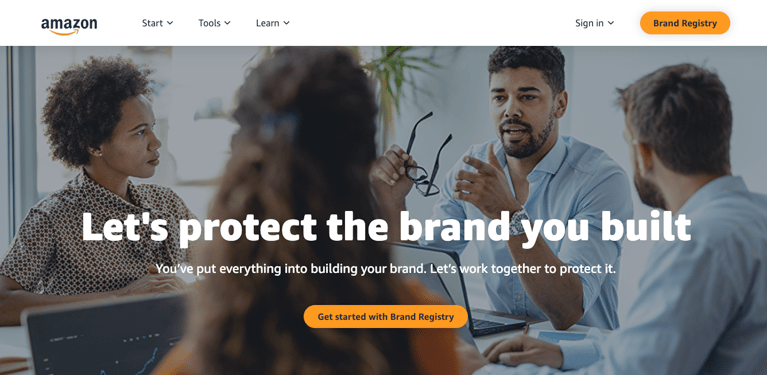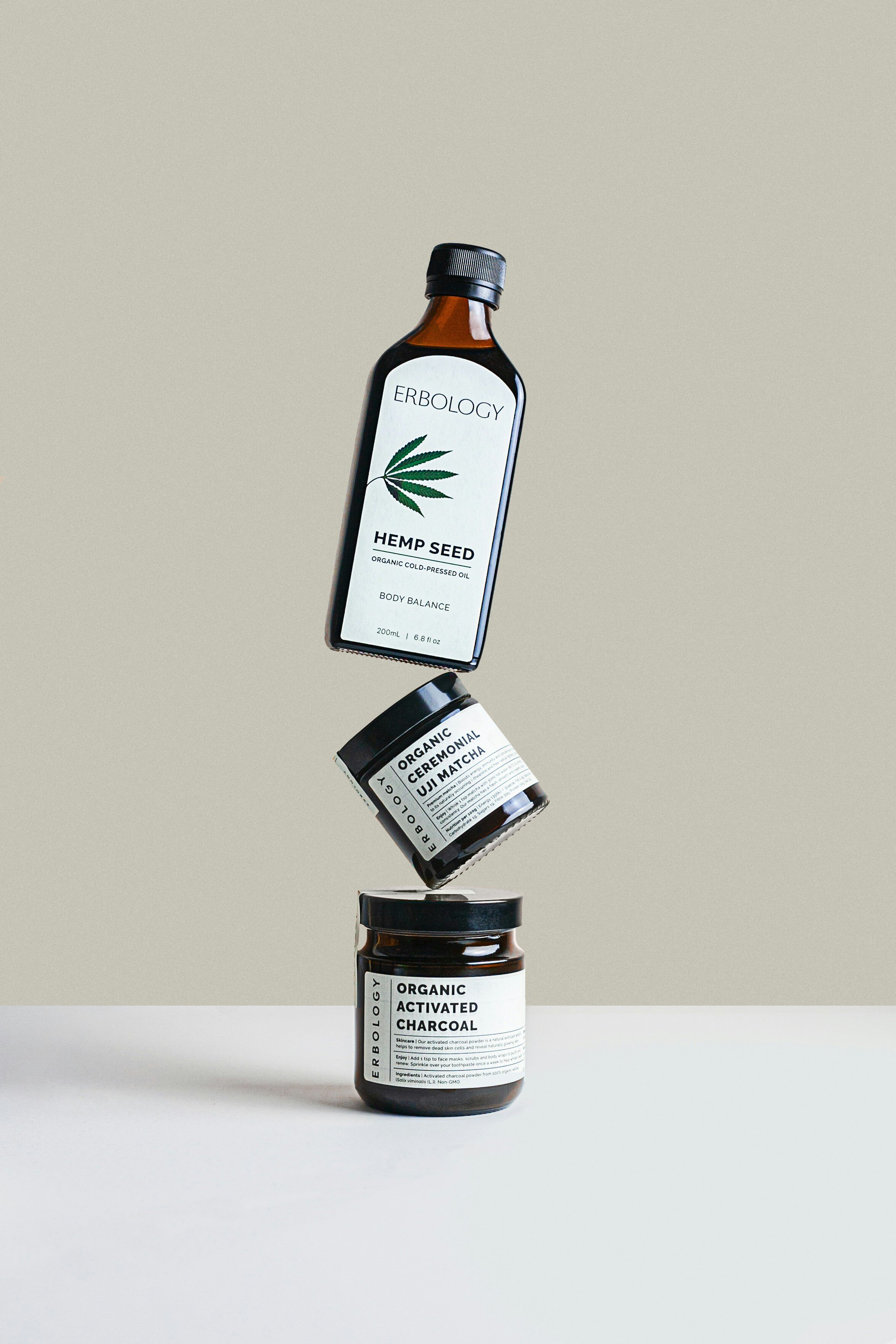Amazon is a crucial marketplace for eCommerce brands. But how do you get the most out of it as a brand owner? And how do you measure success? These are questions Finch clients - and the D2C eCommerce industry at large - are always thinking about.
Let's break down how brands can get the most out of their Amazon presence.
Register Your Brand with Amazon to Get Started
The first thing you need to do is to register your brand with the Amazon Brand Registry Program. Amazon makes this process very easy. Here's how to do it:
- Create an Amazon seller account: If you don't already have an Amazon seller account, you will need to create one.
- Verify your eligibility: To enroll in the Brand Registry, you must have an active registered trademark for your brand. Your trademark must be in the form of a text-based mark or an image-based mark with words, letters, or numbers included. In addition, your trademark must be registered with the Intellectual Property Office (IPO) in your country.
- Enroll in the Amazon Brand Registry: Once you have a registered trademark for your brand, you can apply to enroll in the Amazon Brand Registry. To do this, go to the Brand Registry homepage on Amazon and click on the "Enroll Now" button.
- Provide your brand information: Fill in your brand's name, your registered trademark number, and other details about your brand as requested by Amazon.
- Provide additional information: Amazon may request additional information or documentation to verify your eligibility for the Brand Registry.
- Wait for approval: Amazon will review your application and notify you when your brand is approved for the Brand Registry.
Once your brand is approved for the Brand Registry, you will have access to a variety of tools and services to help protect your brand on Amazon, including the ability to create product listings that feature your brand and the ability to monitor and report any suspected infringement of your intellectual property rights.
The Power of Product Data Feeds for Amazon
A product data feed is a file that contains all the necessary information about your products in a format that Amazon can understand. Let's walk through the steps involved in building a product data feed for Amazon Brands and discuss the benefits of doing so.
First, it's important to determine the required product data. Amazon has specific requirements for the data that must be included in your product data feed, such as product titles, descriptions, images, pricing, and inventory levels. Ensuring that your data feed includes all the necessary information is critical to making your products easily discoverable on Amazon.
Next, you'll want to collect your product data in a format that can be easily imported into Amazon. This can be done manually or through an automated process using a product information management (PIM) system. Formatting your data in a consistent and organized way will help ensure that your products are accurately represented on Amazon.
It's important to validate your data feed before submitting it to Amazon. Use Amazon's data feed validation tool to ensure that your data feed is formatted correctly and includes all the required information. This will help prevent any issues with product listings or inventory management down the line.
Now, let's talk about the benefits of building a product data feed for Amazon Brands. First and foremost, a data feed helps ensure that your products are accurately represented on Amazon, which can increase your chances of making sales. Additionally, a data feed can help you manage your inventory more effectively, which is critical to maintaining a positive customer experience. Put simply,
By building a product data feed for Amazon Brands, you're taking an important step towards optimizing your presence on Amazon and making your products easily discoverable to potential customers. So, take the time to get your product data feed in order and watch your sales soar.
What is an Amazon Brand Store?
An Amazon brand store is a custom, multi-page website that allows brand owners to showcase their products on Amazon. It's a branded destination that lives on Amazon where sellers can create an immersive shopping experience for customers that utilizes their brand and voice. The brand store can be customized with your brand's logo, colors, images, and text, and is designed to highlight your brand's unique value proposition and story.
Benefits of having an Amazon brand store:
- Increased brand awareness: An Amazon brand store can help increase brand awareness and recognition by providing a dedicated space for your products on the Amazon platform.
- Improved customer experience: An Amazon brand store provides an immersive shopping experience that's tailored to your brand. This can help increase customer engagement and lead to higher conversion rates.
- Increased sales: By showcasing your products in a custom brand store, you can increase the visibility of your brand and products, which can ultimately lead to increased sales.
- Analytics and insights: Amazon brand stores come with built-in analytics and insights, which can help you track performance and identify areas for improvement.
- Customization: Amazon brand stores allow for a high degree of customization, so you can tailor the look and feel of your store to match your brand's unique identity.
An Amazon brand store can help sellers on the platform build their brand, increase sales, and improve the overall customer experience. It's a valuable tool for sellers who want to differentiate themselves from the competition and create a more immersive shopping experience for their customers.
Protecting Your Brand on Amazon with Brand Stores
An Amazon brand store can help protect your brand by providing a dedicated space to showcase your products on the platform. You can customize your brand store with your unique messaging, logo, and colors, which can help customers recognize and differentiate your products from those of counterfeiters or unauthorized resellers.
Brand gating is another feature that can help prevent counterfeiters or unauthorized resellers from listing your products on Amazon. This means that only authorized sellers can sell your products on the platform, which can help protect your brand from dilution or damage.
Getting More Out of Paid Traffic with Sponsored Brand Campaigns
There are three main types of paid campaigns for Amazon sellers:
- Sponsored Products: These are pay-per-click (PPC) ads that appear in search results and on product detail pages. Sponsored Products allow brands to promote individual products and can help increase visibility and sales.
- Sponsored Brands: These are PPC ads that feature a brand logo, a custom headline, and multiple products. These ads appear at the top of search results and can help increase brand awareness and drive sales.
- Sponsored Display: These ads allow brands to retarget customers who have viewed their products or similar products on Amazon or elsewhere on the web. Sponsored Display ads can appear on product detail pages, customer review pages, and other places on the platform.
Driving paid traffic to an Amazon brand store can provide a more immersive shopping experience for customers. By directing customers to a dedicated brand store, you can showcase your entire product line, tell your brand story, and highlight your unique value proposition. This can help increase customer engagement and lead to higher conversion rates.
Another benefit of driving paid traffic to an Amazon brand store is that it can help build brand awareness and recognition. By creating a custom brand store experience, you can help customers identify and differentiate your brand from competitors. This can be especially valuable for new or emerging brands that are looking to establish themselves on the platform.
Sending paid traffic to an Amazon brand store can also help improve your overall ROI on advertising spend. By directing customers to a brand store, you can increase the likelihood of them purchasing multiple products from your brand. This can help increase the average order value and improve the overall return on investment for your advertising campaigns.
Finally, driving paid traffic to an Amazon brand store can provide valuable insights and analytics into customer behavior and preferences. By tracking customer interactions with your brand store, you can gain insights into which products are most popular, which messaging resonates with customers, and how to optimize your advertising campaigns for maximum impact.
The Power of Sponsored Brands Video Ads
Sponsored Brand Videos are a type of pay-per-click (PPC) ad on Amazon that feature video content. These ads appear in search results and can help increase brand awareness and drive sales. Sponsored Brand Videos allow brands to showcase their products and tell their brand story in a more engaging and immersive way than traditional image-based ads.
At Finch, we've seen a measurable increase in conversions and click-through rates as a result of implementing video ads for Amazon clients.

To create a Sponsored Brand Video, brands can use their own video assets or Amazon's video creation tool to create a custom video ad. Brands can target their Sponsored Brand Videos to specific keywords, products, or audiences, and can track performance metrics like views, clicks, and conversions.
Sponsored Display Videos, on the other hand, are a type of retargeting ad on Amazon that features video content. These ads allow brands to retarget customers who have viewed their products or similar products on Amazon or elsewhere on the web. Sponsored Display Videos can appear on product detail pages, customer review pages, and other places on the platform. For this reason, we sometimes refer to it as "mini DSP" due to the extended reach it offers.
To create a Sponsored Display Video, brands can use their own video assets or Amazon's video creation tool to create a custom video ad. Brands can target their Sponsored Display Videos to specific audiences based on interests, behaviors, or past purchases, and can track performance metrics like views, clicks, and conversions.
How to Measure Success on Amazon
Building brand equity on Amazon is a challenge for many brands due to the change in rules of engagement. Traditional first-party tools such as Google Analytics, Hotjar, or any first-party data analytics tools are not available in the same capacity, which makes it harder for marketers to measure user impact.
However, the Amazon Brand Metrics tool can help build and measure the overall impact on brand equity. The tool breaks down the impact of a brand into three categories: awareness, consideration, and purchase. Each stage has different metrics to track, and Amazon uses different internal metrics to grade a brand on a percentile scale.
The report is easy to read and provides the actual data backing up the assessment. The awareness category measures the brand search data and the number of shoppers in the aisle for the competition. The consideration category tracks the product detail page view data and how many shoppers are aware of the brand. The purchase category analyzes the subscribe and save numbers, the overall add to cart, and how the brand can convert beyond the purchase phase.
By using Amazon Brand Metrics, brands can place themselves in a race to the customer's consideration and convert beyond the purchase phase into an inverse funnel. This tool helps brands build brand equity on Amazon and measure their impact against anonymized data of everyone in their market segment.
Amazon's Return on Engagement Metric
Amazon has a unique way of measuring success for brands that sell on their platform.
Amazon uses a metric called "return on engagement" to evaluate the effectiveness of a brand's marketing efforts on its website. This metric measures the return on investment for every engagement a customer has with a brand on Amazon, whether it's viewing a product detail page, clicking on an ad, or making a purchase.
By breaking down each engagement into a dollar value, Amazon can determine the overall value that a brand is driving through its marketing efforts. This allows brands to measure the success of their upper-funnel campaigns, which aim to build awareness, consideration, and purchase intent among potential customers.
Moreover, Amazon provides brands with a percentile rating that indicates how well they are performing compared to their competitors on the platform. This rating can help brands identify gaps in their strategies and improve their overall performance on Amazon.
Achieving Metrics-driven Growth for Amazon Brands
In the world of e-commerce, building a brand on Amazon can be challenging. With the fierce competition in almost every product category, gaining brand awareness and loyalty can be a daunting task. This is where a comprehensive marketing strategy comes in.
One approach is to focus on the full-funnel approach and analyze where the brand stacks up. This was the strategy implemented for a Finch client recently. They were in a highly contested category, and we wanted to build more brand awareness for them on Amazon.
We started by looking at brand metrics reports to determine performance. We discovered that we were doing exceptionally well in driving brand awareness and consideration, and many people were adding products to their carts. However, we were struggling to drive sales and get people to checkout.
Then we realized that we needed to shift our focus towards the purchase phase of the funnel. After analyzing product detail pages, we discovered that we were being undercut by competitors who were using sponsored display ads to scoop sales from us. This was a major surprise for us, and we knew we had to act fast.
We started by launching Brand Protection campaigns to fend off competitors who were undercutting our prices. We then launched remarketing campaigns to shore up a little bit of headway for our channel targets to hit.
At first, the Brand Protection campaigns did not seem like a winner when looking solely at the ROAS numbers. However, when we analyzed the brand metrics and saw that this was where we were losing our momentum, we knew we had to invest in it. The effect that it had on bridging the gap in the purchase phase was huge, and it helped us to grow our purchase metrics.
After deploying the Brand Protection campaigns, we saw that the ROAS jumped from our lower funnel purchases like our Sponsor Products ads. Our purchase metric started to grow, and that's what we focused on growing.
This experience taught us the importance of analyzing brand metrics reports, especially when trying to build a brand on Amazon. Although brand awareness and consideration are essential, they don't put money in the pot. We need to ensure that we're driving sales and getting people to checkout. With a comprehensive marketing strategy that focuses on the full funnel, we can build a robust brand on Amazon that drives sales and customer loyalty.







